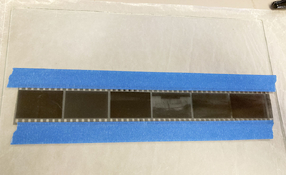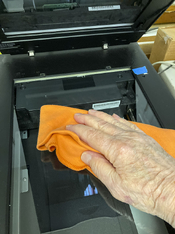Alan Edward Klein
Member
About a year ago I purchased one of the GTX 980 from Japan and can confirm it came to me quickly and 100% new in box. All the documents are in Japanese so you will need to download english ones online. It shows up in my Vuescan software as a V800 so I am assuming that the V800 V850 and GTX-980 are all the same hardware and the only difference is what it was shipped with in terms of packaging, documentation, software, and film holders. IF my memory serves me correctly the V850 originally came with 2 each of some of the film holders as a 'bonus' over the V800? The GTX-980 comes with one each - but they are the ones with a clear plastic element in the holder that has a surface treatment that I assume is to combat Newton's Rings.
Note that the film holder has some adjustable "feet" that is used to calibrate the focal plane. I purchased one of Vlads Test Targets for medium format and calibrated my focus and found it to be right in the middle of the adjustable feet settings. The plastic holder frames are a bit finicky if you ask me. It is sometimes a struggle to get them snapped shut and then when I open them I feel like I am going to break them. As of now I am not going to go after the ones you can get on the aftermarket because they seem expensive for what you get. As I understand it the optical path is different when using items placed directly on the glass vs those placed in a holder. There are two different focal planes - I think the setting in Vuescan between print and transparency scanning selects the focal plane to use, but I might be wrong on how this works.
I have heard people claim that there is no reason to use this Epson scanner above the 1600 dpi setting because it can't get higher resolution. So, I also performed a test using the test targets to see if the resolution of the Epson hardware can really get to 6400 dpi. I scanned a small portion of the test target (the smallest details on the target) multiple times in a row without physically changing anything at 1600, 3200 and 6400 dpi. It is easy to see the resolution increase from 1600 to 3200 AND there is an increase in resolution from 3200 to 6400 but from my eye the difference is less noticeable. This suggests to me that there is higher resolution than 3200 but that maybe the test target itself, the focus, or something else in the optical path is decreasing the sharpness. The machine outputs a file with 6400 dpi but it is only judged to my eye to be a little sharper than the 3200 dpi version. It doesn't really matter though because my computer chokes on a 6X7 negative scanned at 6400 dpi scanned to a RAW file.
The V850 will output 6400 or 3200 in resolution. But you're only seeing the pixels. There is no difference in actual data from a 2400 scan, which is what I use.
Also, you didn;t specify if you added sharpening. The V850 program nominally sets increased sharpness to the auto scan routine, even on manual. You have to uncheck it. Did you?







